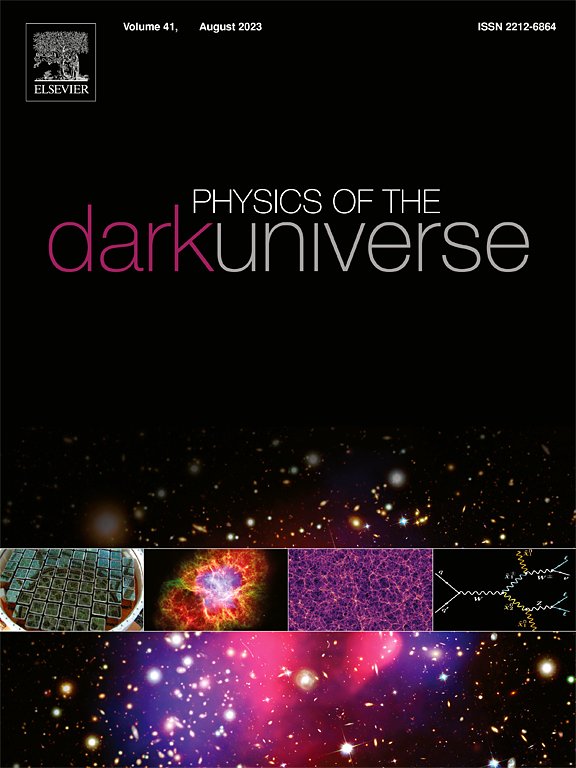广义光引力RTBP中暗物质晕和反照率效应对面外运动的影响
IF 5
2区 物理与天体物理
Q1 ASTRONOMY & ASTROPHYSICS
引用次数: 0
摘要
在广义光引力限制三体问题的框架下,研究了暗物质晕和反照率效应在面外平衡点存在和线性稳定性分析中的影响。该系统考虑了一个无限小的质量在暗物质晕、辐射初星产生的辐射压力和扁次星反照率的综合影响下的面外运动。采用幂级数展开式近似法和经典牛顿-拉夫逊法计算平面外平衡点,并进行线性稳定性检验。在面外平衡点和稳定区位置的背景下,观测到暗物质晕的显著影响。在xz平面上确定了两个对称的面外平衡点,并在除ρ=μκ(1−μ)和κ=μρ(1−μ)外的假设扰动参数γ、κ、ρ和Mh的定义范围内进行了检验。此外,这些点要么移动各自的象限,要么在ρ和κ的临界值处与z轴对齐,并在某些条件下消失。此外,线性稳定性分析表明,当扰动参数(包括质量参数μ)在给定范围内时,这些平衡点都是不稳定的。所得结果将有助于研究具有不同摄动的类似问题。本文章由计算机程序翻译,如有差异,请以英文原文为准。
Impact of dark matter halo and albedo effect on the out-of-plane motion in the generalized photogravitational RTBP
This research investigates the impact of a dark matter halo and albedo effect in the context of existence and linear stability analysis of out-of-plane equilibrium points under the frame of a generalized photogravitational restricted three body problem. The system considers the out-of-plane motion of an infinitesimal mass under the combined influence of the dark matter halo, radiation pressure force due to radiating primary and albedo from oblate secondary. To compute the out-of-plane equilibrium points, an approximation method in the form of power series expansion and the classical Newton–Raphson method are utilized followed by linear stability test is performed. A significant influence of the dark matter halo is observed in the context of positions of out-of-plane equilibrium points as well as of the stability region. Two symmetric out-of-plane equilibrium points are identified in the -plane and are examined across the defined ranges of assumed perturbing parameters , , and except for and . Moreover, these points either shift their respective quadrants or align to the -axis at critical values of and and vanish under certain conditions. Further, linear stability analysis indicates that these equilibrium points are unstable for all values of perturbing parameters (including mass parameter ) within their defined ranges. The obtained results will help to study similar problem with different perturbations.
求助全文
通过发布文献求助,成功后即可免费获取论文全文。
去求助
来源期刊

Physics of the Dark Universe
ASTRONOMY & ASTROPHYSICS-
CiteScore
9.60
自引率
7.30%
发文量
118
审稿时长
61 days
期刊介绍:
Physics of the Dark Universe is an innovative online-only journal that offers rapid publication of peer-reviewed, original research articles considered of high scientific impact.
The journal is focused on the understanding of Dark Matter, Dark Energy, Early Universe, gravitational waves and neutrinos, covering all theoretical, experimental and phenomenological aspects.
 求助内容:
求助内容: 应助结果提醒方式:
应助结果提醒方式:


